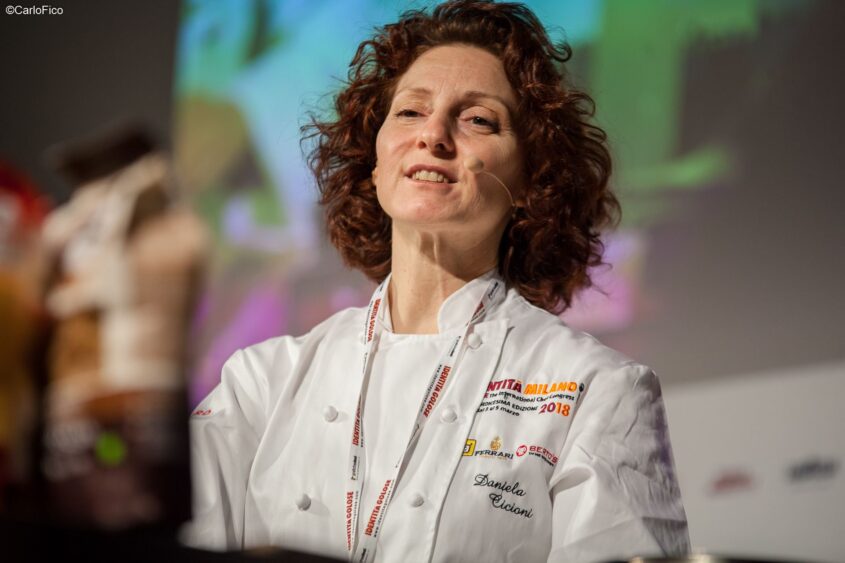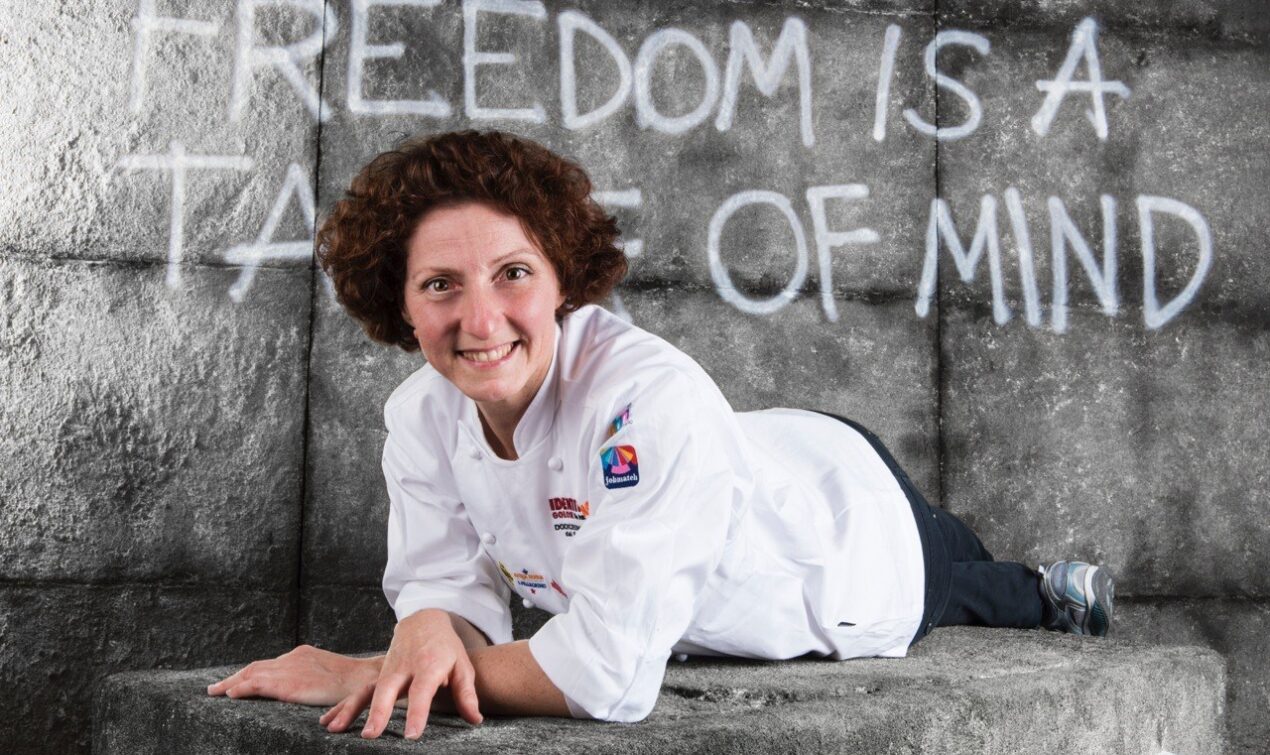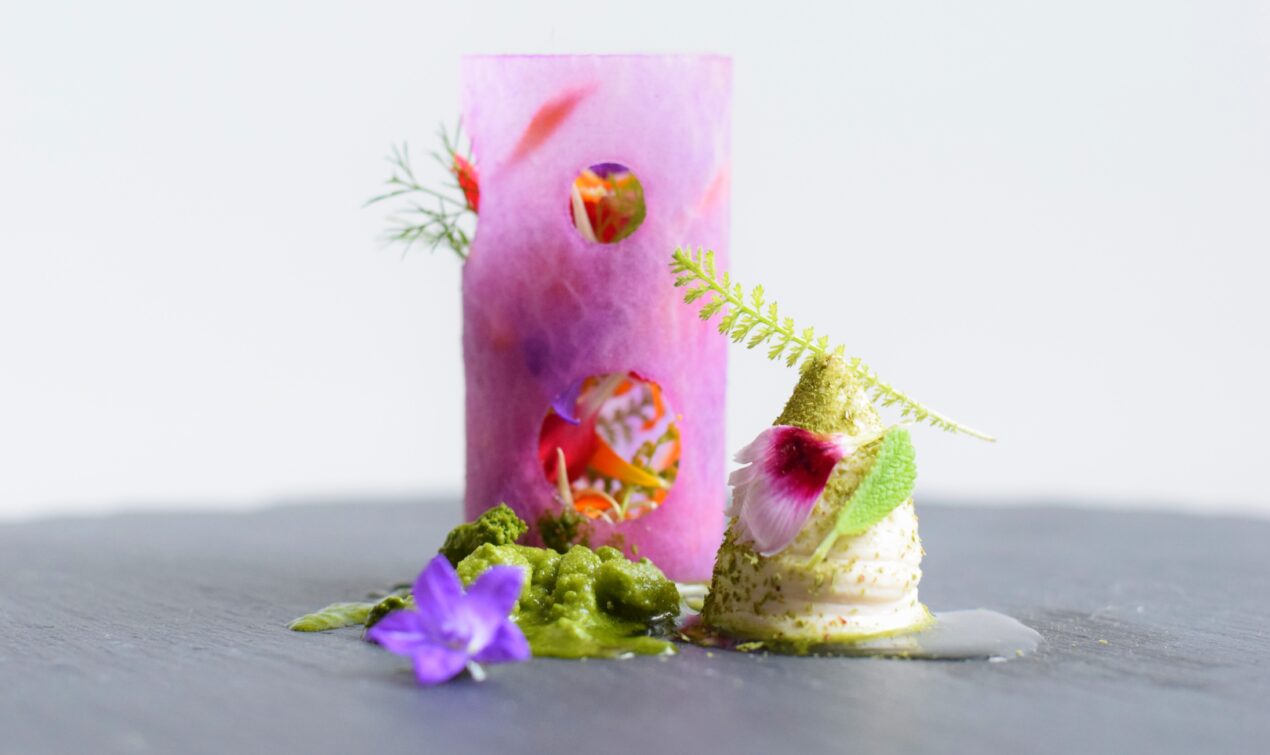From Landscapes to Living Foods: The Inspiring Journey of Chef Daniela Cicioni and her Raw Cuisine

What happens when a love for plants turns into a culinary revolution? Meet Daniela Cicioni — a visionary who left behind the world of landscape architecture to become one of the most innovative voices in vegan and raw cuisine in Italy.
Known for her vibrant, health-focused dishes and groundbreaking techniques in fermentation and sprouting, Daniela brings art, science, and soul to the kitchen. In this exclusive interview, she opens up about her bold career shift, the challenges of pioneering a new food philosophy, and how she’s helping redefine plant-based cuisine in Italy and beyond.
Whether you’re a food lover, an aspiring chef, or simply curious about how raw vegetables can become gourmet masterpieces — this is a story that will surprise and inspire you.
Let’s dig in.
1) Can you tell us about your professional journey? How did you transition from landscape architecture to vegan and raw cuisine?
I’ve always had a deep interest in the plant world, and working as a Landscape Architect allowed me to study it and understand its potential. Most importantly, it helped me recognize the huge difference between working with living matter versus dealing only with inert materials.
In 2006, I took a major turn in my professional life and decided to pursue a career in plant-based cuisine. I left my job as a Landscape Architect, specialized in catering, and began working as a Vegan Catering Organizer.
In 2008, I decided to deepen my knowledge of plant-based cuisine by graduating as a Natural Chef at La Sana Gola.
My passion for raw food developed somewhat by chance. The first place I worked as a chef was specifically looking for someone with knowledge of raw cuisine, so I had to dive into it—reading, studying, and experimenting on my own (at the time, raw food was far less known than it is today).
I learned to understand people’s needs, tastes, and trends, and I realized how much shapes and colors—alongside flavor—influence our food choices.
2) What inspired you to pursue raw cuisine, and what were the main challenges you faced during the transition?
Even as a young woman, I was passionate about plant-based cooking, but my professional interest in it was sparked one evening in 1999—the year I graduated.
I had dinner at La Sana Gola, a natural cooking school-restaurant in Milan, and was amazed by how delicious, satisfying, and completely free of animal products the food was.
During the meal, Martin Halsey—a biologist and the school’s founder—explained to me how, according to the principles of natural cuisine (meaning vegan and macrobiotic), cooking and eating are the most direct and powerful ways to connect (or disconnect, depending on our choices) with the environment.
From that moment on, I dreamed of turning this discovery into my profession, aiming to combine pleasure, health, and respect for life.
While studying at La Sana Gola, I discovered how profoundly this way of eating benefits not only individual health but also the environment and animals. It was this vision of the cuisine’s potential that convinced me to change paths.

In the early years, I explored various aspects of plant-based cooking, from vegan catering and raw cuisine to teaching and private consulting. Every experience contributed to my growth and training.
At times, I also worked as a sales assistant in a natural foods store. I briefly joined the team at the Michelin-starred restaurant Joia, and I did an internship at the gastronomy lab of Peck in Milan, where I learned the strict rules of high-level professional kitchens.
They were intense, fast-paced years.
From 2008 to 2013, I worked as a vegan and raw chef at Centro Botanico, a restaurant and deli in central Milan. That’s where I explored and refined raw food techniques, including sprouting, fermentation, and dehydration.
Since 2013, I’ve been working independently, focusing on research and product development, and offering courses and consulting for amateur cooks, professionals, and businesses.
3) Your cuisine is known for techniques like fermentation and sprouting. How did you develop these skills, and what role do they play in your culinary philosophy?
Some fermentation techniques were already part of the curriculum at my cooking school, but things really changed after 2008.
As a raw chef at Centro Botanico, I felt the need to offer more variety in flavors and taste experiences. Since traditional cooking methods weren’t an option, I delved deeply into fermentation and sprouting techniques.
At the time, this was uncharted territory in Italy—there were no courses or chefs focusing exclusively on these methods, so I had to teach myself through experimentation.
4) You won the first edition of the international competition “The Vegetarian Chance.” How did that experience impact your career?
It definitely had a positive impact on my career, but the most significant effect was on my own self-awareness—recognizing my professional skills in the field of high-level natural cuisine.
5) You collaborate with various institutions and events like Identità Golose. How do these experiences enrich your view of vegan and raw cuisine?
Participating in these kinds of events is always a valuable opportunity for growth and exchange—even when it involves tasting non-plant-based dishes. I discover new techniques and flavors, which I then reinterpret through a plant-based lens.

6) How do you balance the aesthetics of your dishes with a focus on health and sustainable ingredients?
It’s not easy!
Our perception of a dish involves all the senses, not just taste. Sight plays a major role in the eating experience, as it sends messages to the brain based on the dish’s appearance—its shape, size, and color. This appearance influences our perception of flavor by creating expectations. So, visual appeal is just as important as content—perhaps even more so in plant-based cuisine.
I always start by choosing ingredients that meet natural standards—no synthetic or ultra-processed items. Then I consider the cooking techniques, making sure they align with macrobiotic or raw food principles.
In macrobiotics, the basic idea is that ingredients, cooking methods, and portions should be chosen according to the climate, the person for whom the dish is intended, and the season. These are common-sense principles, provided you have a solid knowledge base.
With these fundamentals in mind, I develop each dish while simultaneously thinking about how to communicate it visually. My background in landscape architecture and my passion for drawing really help in this aspect.
7) What advice would you give to those interested in exploring vegan and raw cuisine, whether personally or professionally?
First and foremost, I’d recommend choosing a path that offers in-depth, expert-led training—not something improvised, as I sadly see more and more on social media. There, hundreds of recipes are compressed into short clips designed to capture attention, often using ingredients or methods that lack any real nutritional or energetic logic.
It also depends on the motivation behind someone’s interest in plant-based cuisine. If, like me, they care about ethics, health, and the environment, I suggest starting with one or more courses led by professionals with years of experience in natural plant-based cooking.
I always recommend starting with the fundamentals of macrobiotics. Unfortunately, I see many plant-based dishes created by professional chefs who lack this foundation. The result is food that may look and taste appealing but makes no sense nutritionally or energetically.
Swapping out an animal-based ingredient for a plant-based one—then overcooking or heavily processing it—doesn’t necessarily result in high-quality plant-based cuisine. Nor is it enough to simply focus on macronutrients (protein, carbs, and fat).
8) What are your future projects, and how do you plan to continue promoting natural cuisine?
I’m currently diving deeper into three main areas.
One involves further exploration of fermentation techniques, especially spontaneous fermentations (those that occur without added starters), which may have both preventive and healing properties.
The second area relates to the principle of bioresonance in quantum physics. According to this theory, all living forms emit distinct frequencies and can interact and communicate—even over long distances—with other life forms and the environment.
Organisms and matter can resonate with wellness and rebalancing frequencies specifically created and transmitted using specialized equipment. This is undoubtedly a new frontier for natural cuisine.
The third area is plant-based cold cuts, which are still largely tied to visual and flavor imitations of animal products through the use of questionable techniques and ingredients. I believe this field has a lot of room for improvement.
Thank You, Daniela!
A heartfelt thank you to Daniela Cicioni for sharing her journey, insights, and passion with us. Her dedication to natural cuisine is not only inspiring but also a reminder of how food can be a powerful tool for change — personal, environmental, and cultural.
If you’re curious to learn more, experiment in your own kitchen, or simply admire her culinary creations, be sure to follow Daniela on her social channels and explore her website. Her world is one of color, creativity, and conscious living — and it’s definitely worth a visit.
🌿 Website: www.danielacicioni.it
📘 Facebook (Profile): Daniela Cicioni
📘 Facebook (Chef Page): Daniela Cicioni Chef
📸 Instagram: @danielacicionichef



